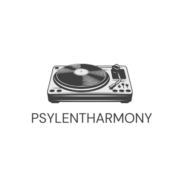I’m a musician and DJ from New York, and for the past 15 years, I’ve been observing how music influences people. I’ve played at parties from Brooklyn to Los Angeles, mixed sets, and even recorded a couple of tracks for local artists. I want to share how pop music intersects with the world of dating and how it helps me personally to find common ground and build connections.
The Perfect Vibe for Dating?
I believe that pop music is the ideal icebreaker when it comes to dating. Over my years as a DJ, I’ve seen tracks like “Uptown Funk” help people on the dance floor relax and start talking. One of the women had also posted in their bio that they enjoyed “Shape of You” by Ed Sheeran, so I told her that this was one of the songs on my playlist at a party in 2017. We immediately hit it off. Music provided us with common ground, and it was less embarrassing than attempting to use overused and hackneyed pickup lines.
Since I actually employ online dating services, music is always a key to success. I’ve also heard of an app called Flure, which focuses on safety and sex positivity and is perfect for people like me (who like to be open-minded about their sexual desires). I also grasped it’s a perfect place to find someone to go to a concert with or to share a playlist with.[2]

How I Use Music
For instance, tickets to a Harry Styles concert are usually around $80, and it’s an ideal evening out. Alternatively, you might want an intimate house party of sorts with the likes of “As It Was” – it’s got a mellow beat and otherworldly vibe that’s perfect for a chill date. Sometimes I just start with something simple, like “Watermelon Sugar” by Harry Styles, to get everyone in the mood for summer. This little hack helps bring people closer and adds an easy-going atmosphere. Here’s what else I use:
- The Night We Met – Lord Huron;
- R U Mine? – Arctic Monkeys;
- Telepatía – Kali Uchis;
- Slow Dancing in the Dark – Joji;
- Take Me to Church – Hozier;
- Save Your Tears – The Weeknd;
- Sweater Weather – The Neighbourhood;
- Goosebumps – Travis Scott;
- Bad Guy – Billie Eilish;
- Pink + White – Frank Ocean.
Why these tracks? I’m not sure, but experience has shown that they work really well. If you’re interested, you can also check out the list of 15 ideal pop music of all time – it’s quite intriguing. Most likely, my work has taught me how to create the right vibe. It’s clear that as a DJ, I select tracks based on the crowd’s mood, and so many times I’ve seen couples going through tough times while listening to songs like “Someone You Loved.” Such tracks helped them express what they couldn’t put into words. Over the years, I’ve witnessed many such stories, and these moments have taught me that music can become a catalyst for people.
Music as Therapy
Music also gives shared experiences that later form the foundation of something more substantial. It’s typically a memory flash of sorrowful tales. For example, following a split-up, I played “Driver’s License” by Olivia Rodrigo for weeks on end. I was making a mix for an event at my club at the time and added this track in there, changing the tempo up to 145 bpm and placing a light sidechain effect on the bass so it could get down more. It was like therapy – I felt like I was exercising emotions on the song and it actually enabled me to let go of it. No wonder that there is even the American Music Therapy Association.
Music isn’t just a way to capture memories but to transform them. The moment I played this remix at the party, I saw how people on the dance floor experienced it differently. Some closed their eyes and swayed gently; others sang along; and some simply melted into the rhythm (which, by the way, is also a form of brain therapy). Suddenly, I felt relieved. My personal experience was no longer something enclosed; it became part of the collective vibe.
After that night, I started experimenting with similar techniques. I took songs that were deeply emotional for me and transformed them into something new. Slow, melancholic tracks were given drum-and-bass treatments, while faster ones were slowed down and drenched in reverb, making them sound like distant dreams. Today, I can listen to that remix and no longer feel the same heaviness. Now, it’s just one of the tracks in my set, a piece of history that was once important but no longer weighs me down.
Final Thoughts
Music isn’t just a background for our lives; it’s a tool that helps us find common ground, process emotions, and build connections.

As a DJ, I’ve seen how it brings people closer, and I’ve often used it in my own dating life. So explore, analyze, learn, and use the power of music to achieve your desires and as a remedy for melancholy. Best of luck to everyone!

